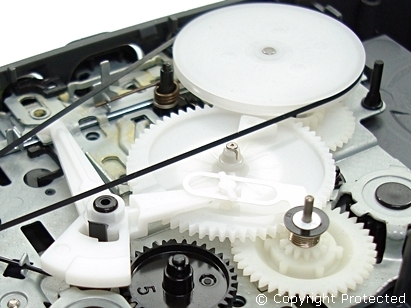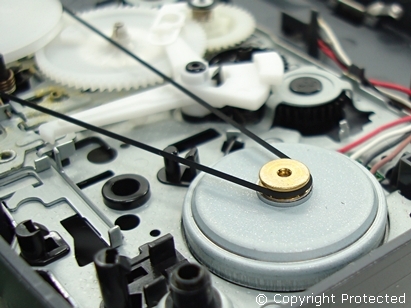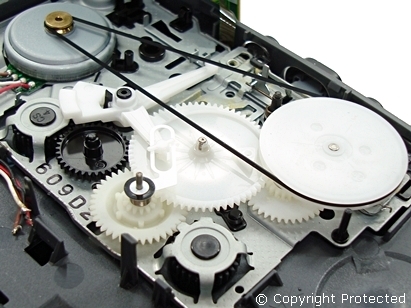Sony WM-FX193 Mechanism

Although the Sony WM-FX193 is a budget-end Walkman, it has a disc motor, which provides a super smooth tape speed, and allows the player to operate much longer on battery power. Just five years earlier in 1995, this feature would have been expensive, but in this model, it is a standard. In this model, you can see that they have tried to lower the carbon footprint by using less metal. Usually the chassis to hold the tape drive mechanism would be full sized; however, this minified version occupies only two thirds of the case.
The deck mechanism is fairly straightforward and basic. There are no innovations apart from the improvement in the manufacturing processes. The chassis uses the absolute minimum amount of metal and plastics, which is good from a recycling perspective. The anti-rolling design consists of just one screw on a rubber mount, used to fix the metal chassis to the plastic case.
Cogwheels

This photograph shows the plastic cogwheels. I hope they do not become brittle and split after 20 years, as they sometimes did for the earlier Walkmans. If you are a Walkman collector, then you should keep your collection in a cool place as excessive heat can damage the plastic.
Back in the days of Akio Morita Sony was an inventor of new components and products.
Disc Motor

Drive Belt

Since the WM-FX193 has a closed loop servo to regulate the speed of the motor, there is no longer a requirement for a weighty capstan flywheel. Instead, they employ a plastic pulley wheel driven by a rubber belt.
This Article Continues...

Sony WM-FX193
Sony WM-FX193 Inside
Sony WM-FX193 Mechanism
Sony WM-FX193 Tape Transport
Sony WM-FX193 Radio Design
Sony WM-FX193 Radio Chip TA2111F
Sony WM-FX193 LB8115 Audio Chip
Sony WM-FX193 Battery Compartment